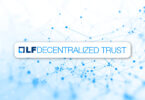Last month, Accenture quietly open-sourced its
Blockchain Integration Framework (BIF) via
Hyperledger. The project is an interoperability solution that currently supports Hyperledger Fabric, Quorum and R3’s Corda. BIF aims to enable the exchange of on-chain data or assets between separate permissioned blockchains or networks.
There are hopes for the initiative to eventually become a Hyperleddger project, but given its infancy, it is currently part of the “Hyperledger Lab”.
There’s an increasing demand to enable enterprise blockchains to interoperate. Trade networks need to talk to each other, and the banks involved in trade finance networks want to tap into the data stored on the trade blockchains.
Article continues …
Want the full story? Pro subscribers get complete articles, exclusive industry analysis, and early access to legislative updates that keep you ahead of the competition. Join the professionals who are choosing deeper insights over surface level news.







